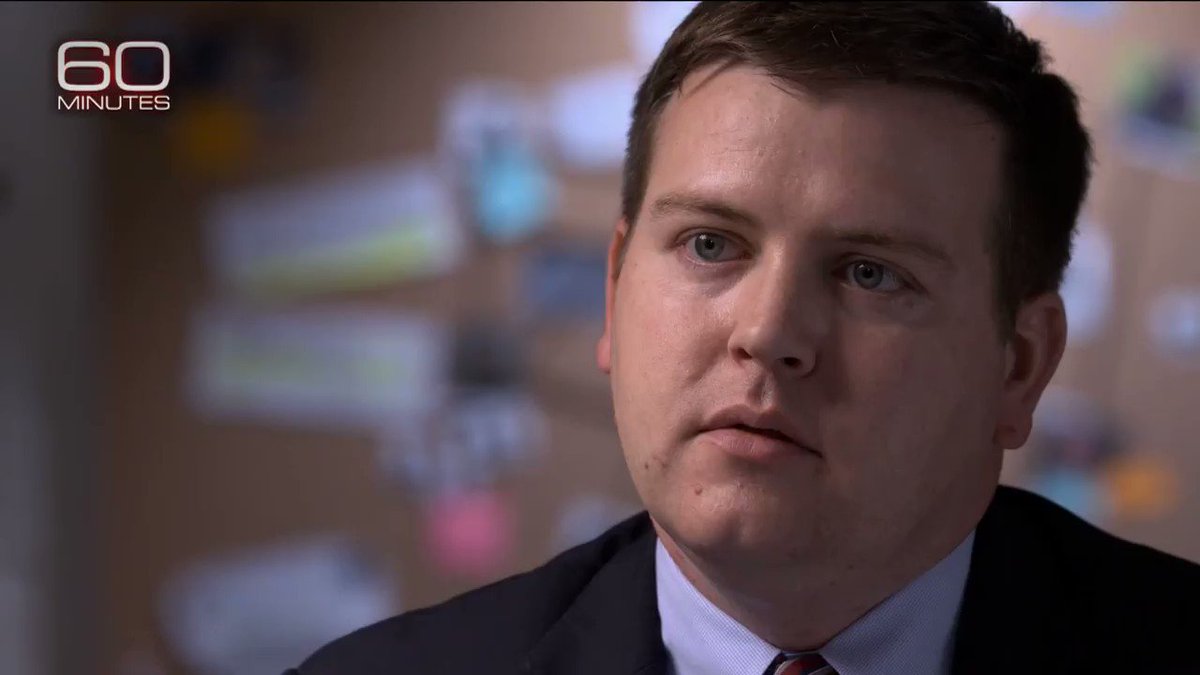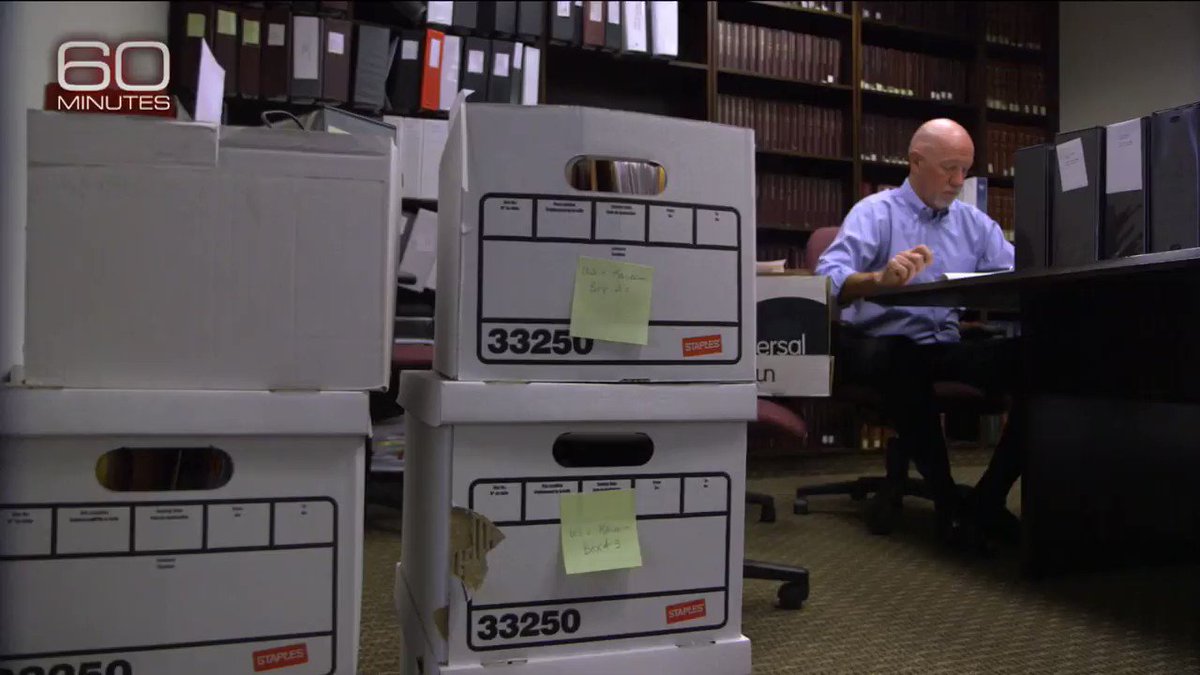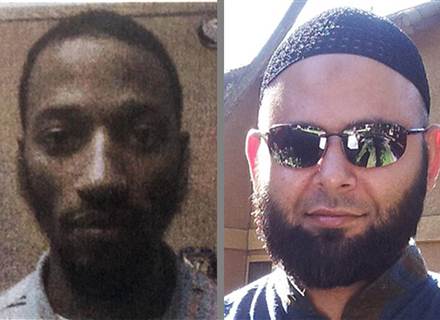
"Complexities."
That's the excuse invoked at the end of a 60 Minutes segment that aired Sunday evening to explain why the FBI failed to stop two ISIS-inspired terrorists in direct contact with two ISIS terror recruiters. The attackers rolled up in a car loaded with guns and ammunition to the "Draw Mohammad" cartoon contest event in Garland, Texas, on May 3, 2015:
What 60 Minutes, fronted by Anderson Cooper and echoed in an interview with Seamus Hughes of George Washington University's Program on Extremism, explains is that FBI sources are stretched so thin that there's no possible way to devote resources to every single potential threat.
I'll grant that FBI counter-terrorism resources are overloaded WAY BEYOND capacity. That's an appropriate and warranted discussion for policymakers to address. Also, in the real world of law enforcement, there are indeed many "complexities" during a case that lead to some very important investigative clues being missed -- especially when FBI resources are overstretched beyond capacity.
But these "complexities" don't even remotely begin to explain the massive failure by the FBI in this particular case. Like a blanket that's too short that you can never turn the right way to cover everything, invoking "complexities" to explain the FBI failure in the attempted Garland attack doesn't cover the very issues raised by 60 Minutes in their own report. Yet "complexities" is all that 60 Minutes, Anderson Cooper, and Seamus Hughes give viewers.
So here's the real clarity in this story: at the time of the Garland attack, as the two terrorists, Elton Simpson and Nadir Soofi, were traveling in their car loaded with guns and ammo, they were being closely tailed by an undercover FBI agent (not an informant -- an actual FBI agent) whom they had previously been in contact with on social media.
The undercover agent even snapped pictures of the attack site just seconds before Simpson and Soofi jumped out of their car with guns blazing:
60 Minutes helpfully provides the undercover FBI agent's picture taken seconds before the attack showing two individuals, including a police officer, who were shot at by the pair:
And they provide a helpful graphic of how close the undercover FBI agent was tailing Simpson and Soofi (see the terrorists' car turning into the Curtis Culwell Center, and the FBI undercover agent following immediately behind):
And yet, according to a statement provided to 60 Minutes, the FBI claims they had no advanced knowledge of the attack:
We wanted to ask the FBI those same questions. But the bureau would not agree to an interview. All the FBI would give us was this email statement. It reads: “There was no advance knowledge of a plot to attack the cartoon drawing contest in Garland, Texas.”
This is not even remotely believable.
The information about the undercover FBI agent being at the scene was already known before the 60 Minutes broadcast, given some details were included in court documents for a related terrorism case in Ohio this past August:
I noted that here at PJ Media, while mentioning the (at that point) dozen "Known Wolf" terror cases during the Obama administration:
But the FBI undercover agent being at the Garland attack site was more than coincidence. In fact, the FBI agent had been in contact with Simpson on social media in the three weeks prior to the attack, and at one point had even told Simpson to "tear up Texas," as the attorney in the Ohio case explained to 60 Minutes:
Anderson Cooper: After the trial, you discovered that the government knew a lot more about the Garland attack than they had let on?Dan Maynard: That’s right. Yeah. After the trial we found out that they had had an undercover agent who had been texting with Simpson, less than three weeks before the attack, to him “Tear up Texas.” Which to me was an encouragement to Simpson.The man he’s talking about was a special agent of the FBI, working undercover posing as an Islamic radical. The government sent attorney Dan Maynard 60 pages of declassified encrypted messages between the agent and Elton Simpson -- and argued “Tear up Texas” was not an incitement. But Simpson’s response was incriminating, referring to the attack against cartoonists at the French magazine Charlie Hebdo: “bro, you don’t have to say that ... ” He wrote “you know what happened in Paris … so that goes without saying. No need to be direct.”
Again, this is information that was reported months ago:
The FBI isn't too interested in answering questions about their undercover agent's encrypted communications with would-be Garland killer Elton Simpon, as Daily Beast reporter Katie Zavadski found out when she asked them directly:
Press officers for the U.S. Attorney’s Office for the Northern District of Ohio, the Cleveland FBI Office, and the Department of Justice declined to comment beyond the affidavit. FBI spokeswoman Carol Cratty hung up on The Daily Beast after being asked about the “tear up Texas” text.
Complexities. But as the late Billy Mays would say: "But wait! There's more!"
Unmentioned in the 60 Minutes report: the FBI sent a bulletin to Garland police hours before the event warning that Simpson -- whom the Justice Department had already unsuccessfully prosecuted previously for his role in a terror cell -- might be on his way to the Garland event, even including his photo and his license plate number:
FBI Director James Comey even admitted they had information, saying:
We developed information just hours before the event that Simpson might be interested in going to Garland.
Garland police claim they never saw the FBI's bulletin. But 60 Minutes never bothers to mention it at all.
Also unmentioned was the considerable online chatter in ISIS circles about the event, and in some cases directly threatening it.
As I reported exclusively here at PJ Media at the time, what initiated most of the chatter was the attempt by the only two Muslim members of Congress -- Keith Ellison and Andre Carson -- to prevent Dutch parliamentarian Geert Wilders from attending the event:
The chatter began when news broke that two Muslim congressmen, Keith Ellison and Andre Carson, had appealed to Secretary of State John Kerry to deny entry into the U.S. for Dutch parliamentarian Geert Wilders.Wilders was scheduled to be the featured speaker at Sunday's cartoon contest.One law enforcement source who was monitoring potential threats to the event told PJ Media the following:[Ellison and Carson] clearly set things off. Nothing was being said until that news story came out, and then the usual suspects began to talk about it. By the time the weekend rolled around, there were clear and identifiable incitements calling for an attack on the event.
So there was considerable ISIS chatter about the event, even incitement calling for an attack on the event. That concerned the Texas Department of Public Safety so much they committed considerable resources, including creating what one Texas DPS described to me as "a death trap" for anyone who attempted to attack the event.
The online chatter caused no concern for the FBI or any other federal agency. Again, as I reported exclusively, the FBI and Department of Homeland Security sent out a "Joint Intelligence Bulletin" to law enforcement four days before the Garland event dismissing any threat:
Their reasoning was astounding:
Although past events involving the alleged defamation of Islam and the prophet, Muhammad, have resulted in threats or overt acts of violence overseas, we have not yet seen such violence in the United States. The most frequent reaction among US-based homegrown violent extremists (HVEs) is discussion and verbal disapproval via online communication platforms, including websites with violent extremist content and social media sites.† We assess it is unlikely that any one event perceived to defame Islam would alone mobilize HVEs to violence.
Because such an attack had not happened here yet, as it had just four months prior in the attack on the offices of satirical magazine Charlie Hebdo in Paris, it was unlikely to happen here, the FBI and DHS said.
The FBI and virtually all federal agencies were following a narrative enforced by the Obama White House that ISIS was the "JV team" and posed no domestic terror threat to the United States. That's not where the facts led, but it was the narrative blinders that the FBI and Director James Comey were willing to assume.
How much of that narrative enforcement is still in place? No one really knows, and 60 Minutes doesn't bother to ask.
So at this point we have:
- An undercover FBI agent tailing the Garland terror attackers to the Draw Muhammed event
- The FBI agent in direct communication with Elton Simpson telling him to "Tear up Texas"
- The FBI sending Garland police a bulletin with Simpson's picture and license plate warning he may show up hours before the attack
- Considerable online chatter by ISIS operatives, including direct incitement calling for an attack on the event
For those outside the political/media establishment bubble, these might seem to be really important investigative clues that raise serous concerns about the FBI's claims they had no prior warning to the Garland attack. But for 60 Minutesand Seamus Hughes of GWU's Program on Extremism, all their viewers are left with in conclusion are ... "complexities":
(READ THE REST AT LINK):

















No comments:
Post a Comment